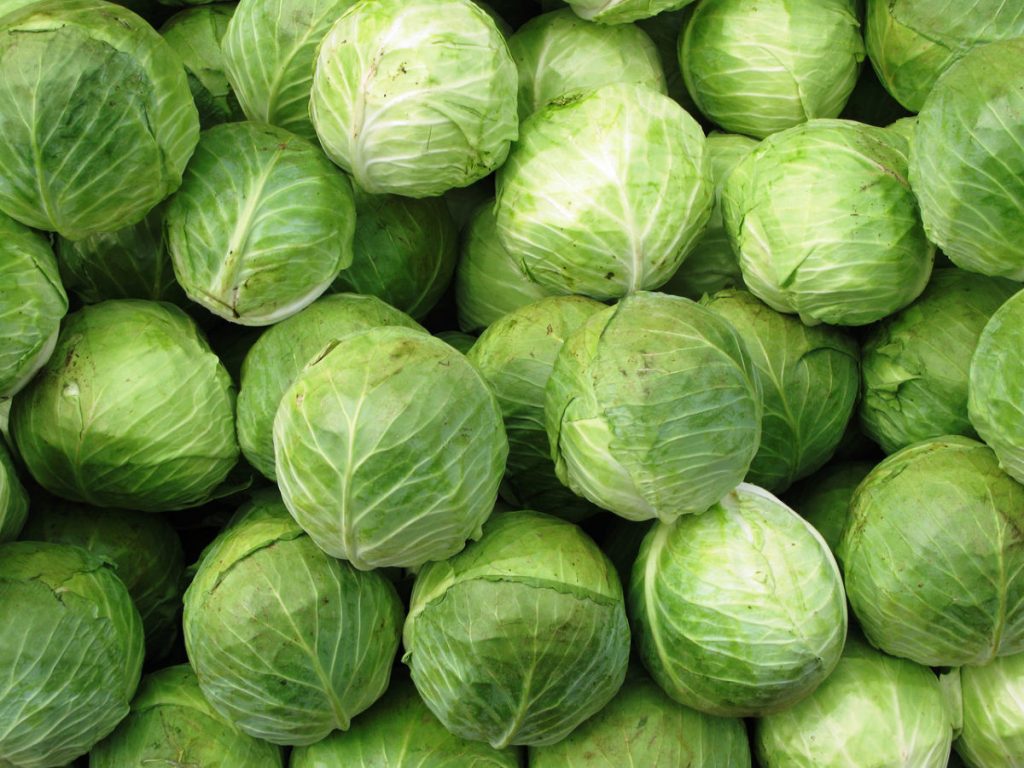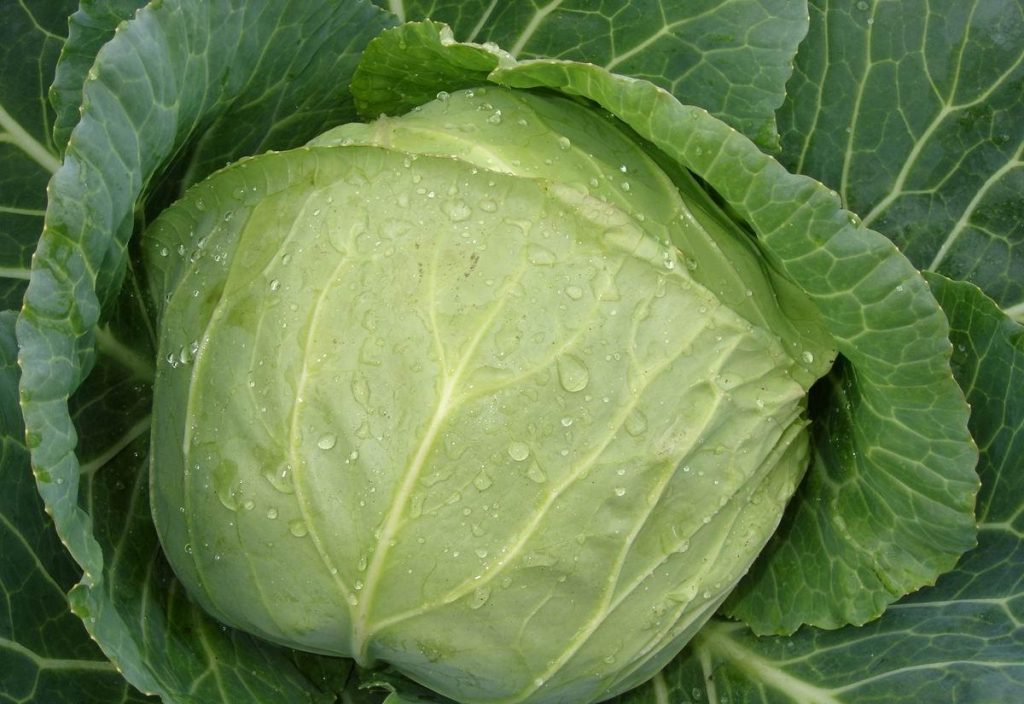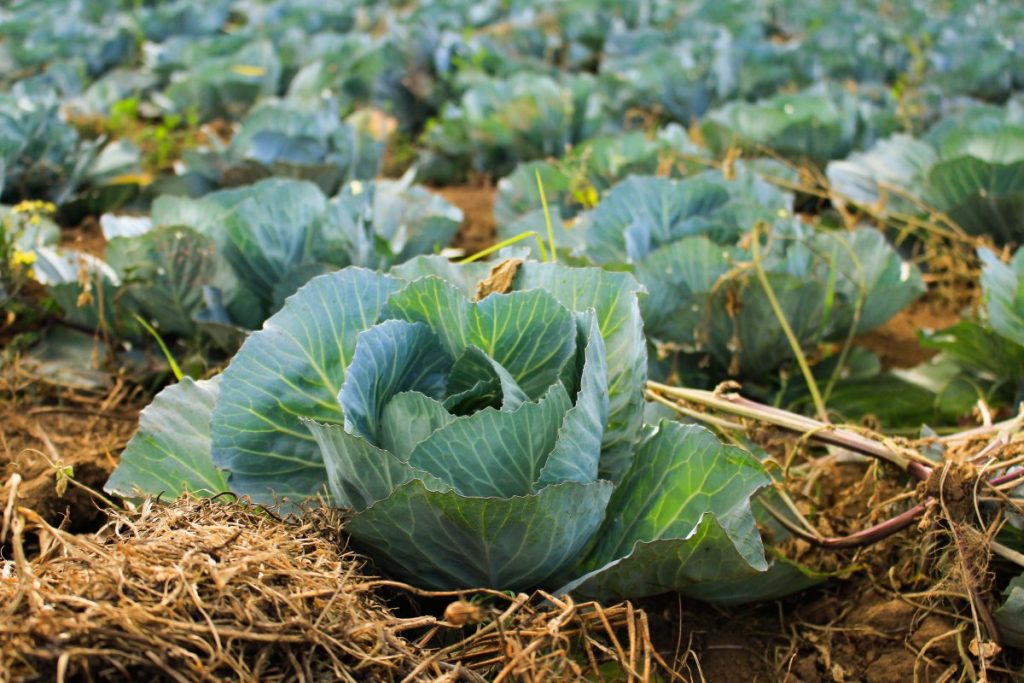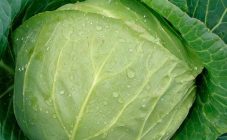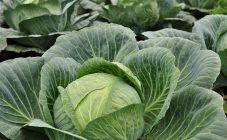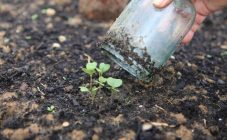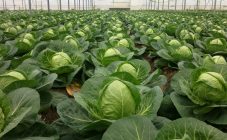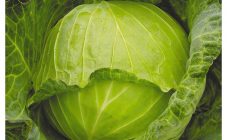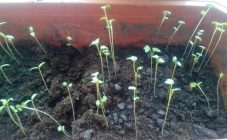Content:
White cabbage is one of the most popular crops in Russia. The choice of a particular cabbage variety depends on the intended use. Early ripening varieties are characterized by delicate leaves with thin veins, while poorly stored and lose valuable taste, for example, Number one mushroom. Late varieties of cabbage are less susceptible to various diseases, but their taste is less bright. Distinctive varietal features of cabbage are dense head of cabbage, good frost resistance and high yield. From the moment of planting seeds to harvesting, an average of 190 days pass. Interestingly, when stored, the palatability becomes more pleasant than immediately after harvest.
List of the best late varieties
The top of the most popular late types of cabbage includes several varieties.
Aggressor F1
A late-ripening hybrid bred in Holland. Recommended for growing in all regions, including the Moscow region and Siberia. It tolerates well and gives a stable yield even in unfavorable conditions. The ripening period is 120 days. The variety is characterized by a slowly ripening dense head of cabbage, with an average weight of 4-5 kg. The aggressor is well stored for 4-5 months without losing the integrity of the fruit. Convenient derived resistance to common diseases in the form of a black leg, late blight. A new quality is the unattractiveness to pests: aphids, caterpillars and cruciform fleas. The variety is unpretentious in care, it is noted that it grows almost by itself.
Mara
A product of the selection of Belarusian scientists. From the moment the seeds are planted to the appearance of ripe fruits, 150-170 days pass. It has very dense dark green heads of cabbage with a clear waxy coating. Their average weight ranges from 4 kg. The crop is well stored without cracking until April. The variety has won popularity due to its high taste both fresh and fermented. Another advantage is resistance to root rot.
Amager 611
A variety that ripens within 150 days. Differs in bluish-green flat-rounded heads of cabbage, weighing 3-4 kg. In the context, cabbage heads are white, dense. It can keep its presentation during six-month storage and transportation. It is very resistant to unfavorable conditions of the Siberian regions, irregular watering and pathogens of fungal diseases. The disadvantages include unsuitability for fermentation. This is due to the coarse structure of the leaves and the bitter taste.
Moscow
Which cabbage is best stored in winter? Moskovskaya is a variety of cabbage developed by Soviet breeders. Scientists took into account the changing climatic characteristics and created a variety adapted to them. Cabbage ripens after 120-130 days. Grayish green flattened heads of cabbage. The weight of one head can reach up to 10 kg. The maximum recorded weight reached the 18 kg mark, while possessing high taste. The variety is steadfast - it is stored for 8-9 months without cracking, retaining the tenderness and juiciness of the pulp.
Kolobok F1
A varietal hybrid, a feature of which is a colored yellowish-white pulp. Round heads of cabbage with densely folded leaves weigh 4-5 kg. Maturity reaches 4 months after planting of seedlings. It is stored for 8-10 months until July, while maintaining resistance to punctate necrosis and thrips.An excellent variety for sourdough and salting. Up to 120 tons of crops can be harvested from a hectare of land.
Valentine F1
A productive hybrid. The leaves are green according to the description with a characteristic white bloom, white in section. They form dense heads of cabbage, the weight of which fluctuates around 4 kg. Ripens after six months from planting seedlings in open ground. During storage, it does not crack, retaining its presentation due to its resistance to gray rot.
Snow White
A distinctive feature is the succulent white leaves that gave the name to the variety. Recommended for preparing baby food, due to the lack of bitterness in the juicy pulp and high nutritional value. During storage, it can withstand temperature rise up to 80 ° C.
Antran
Antran cabbage works well in dry areas. It is characterized by dense compact heads of cabbage, weighing 2-3 kg. In the context, the flesh is white.
Late cabbage, the best varieties of which are listed above, can easily be found on store shelves.
Growing late varieties of cabbage
When choosing late varieties, you should remember about the long growing season - 130-180 days. A certain variety should be given preference on the basis of the recommendation of the State Register for its territorial adaptation. A variety that yields a bountiful harvest in one area may miss in another. If you follow the simple rules of care, you can get a bountiful harvest. Late varieties of cabbage are best suited for long-term storage.
Distinguishes late varieties from early and mid-season ones by the possibility of planting cabbage in the beds, both with the help of seedlings, and immediately with seeds. The best seeds of cabbage varieties for open ground are: Moskovskaya Late and Amager 611.
You need to plant seeds in the beds at the end of April, covering with a 2-3 cm layer of soil.
After 3-4 true leaves appear on the seedlings, thinning should be carried out. Then it is imperative to cultivate the soil to a depth of 8-10 cm, both between adjacent strips and between plants.
Planting seeds for seedlings should be 45-50 days before planting in open beds.
Hardening seeds alternately in hot water (50 ° C) and cold water will increase immunity to pathogens of fungal diseases. Commercial growth promoters such as Epin or Humate can be used to speed up germination.
Sowing soil should be carefully prepared. In a 1: 1 ratio, a mixture of humus and turf is prepared, after which 1 tbsp is added for each kilogram of sweep. spoon of wood ash. The addition of ash will prevent blacklegs and act as an antiseptic agent. You can also add a small amount of peat to increase the breathability of the potting mix. Immediately before sowing, the soil should be watered abundantly, but no more watering is needed before the first shoots appear. Close the box with seedlings with foil to prevent moisture evaporation from the ground surface and place at a temperature of at least 20 ° C.
The average time for seedling to appear is 4-5 days. After that, you need to remove the film and reduce the ambient temperature to 6-10 ° C. After the formation of the first true sheet, the temperature must be raised to 14-16 ° C. Seedlings are demanding on the level of illumination, daylight hours should be at least 14-15 hours.
The first mineral feeding is needed a week after planting.
To do this, a mixture is prepared for 1 liter of water from:
- 2 g of ammonium nitrate;
- 4 g superphosphate;
- 2 g of potash fertilizers.
This volume will be enough for 50-60 seedlings. The next feeding is carried out after 14 days and consists of double doses of the same elements. 2-3 days before transplanting into open ground, a hardening top dressing is carried out from 5 g of superphosphate, 8 g of potassium fertilizer and 3 g of ammonium nitrate. Such a volume of potash fertilizers will contribute to better survival of seedlings in the garden.
To prevent the occurrence of diseases, a week later, you can water the seedlings with a weak solution of potassium permanganate or copper sulfate.
You need to dive the seedlings carefully. After abundantly moistening the soil before this, separate the earthen lump with seedlings. When transplanting, you need to cut the roots by a third and move the seedling to a separate pot.
The transfer of seedlings to open ground occurs when the plant reaches 15-20 cm in height and there are 5-6 leaves on the stem. They must be transplanted by the end of May.
In the fall, you need to carefully dig up the future site for the beds. Loamy and clayey neutral soils are suitable for late varieties. It is necessary to plant seedlings according to the scheme 60x70 cm for sufficient space for growth.
In each hole you need to mix peat with sand, humus and wood ash. Adding 0.5 teaspoon of nitrophoska will provide the seedling with minerals. After mixing the fertilizers, they must be thoroughly watered and the cabbage must be transplanted into the resulting mixture, sprinkled with moist earth on top.
In the first week after transplanting, young plants need to be watered daily. After 3 weeks, the first hilling is required, repeating it after 10 days.
To obtain a good harvest, cabbage requires a competent irrigation regime:
- watering exclusively in the evening;
- in dry periods, water in 2-3 days;
- be sure to loosen and spud the seedlings after each watering.
During the period of tying heads, you need to feed the cabbage with the following mixture (calculated per 10 liters of water):
- 8 g of potassium sulfate;
- 5 g superphosphate;
- 4 g of urea.
Harvesting terms and rules
There are signs that help determine the maturity of cabbage heads:
- firm to the touch and reaching the size characteristic of the variety;
- stopping the growth of heads of cabbage;
- yellowing of the lower leaves;
- the period from mid-September to frost.
It is better to cut heads of cabbage in the morning in dry and cool weather. For long-term storage in winter, forks removed before the onset of frost are better suited. Those that have been exposed to subzero temperatures are best prepared or used for food.
Summarizing the above, it should be noted that the combination of a competent irrigation regime, top dressing, the time of planting seeds and their transplantation to the beds will help to get a harvest of strong juicy heads of cabbage that can be stored for several months.
